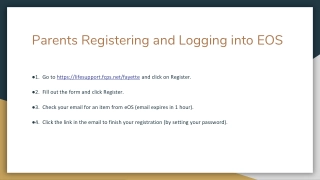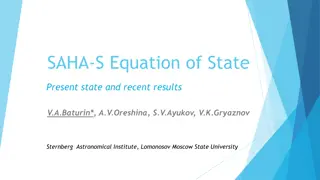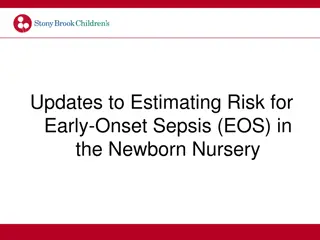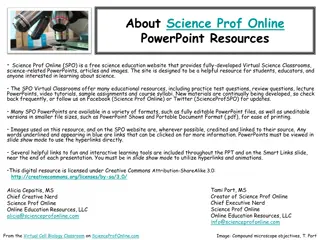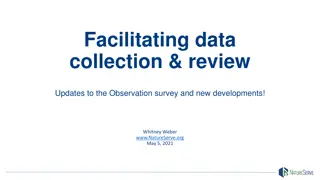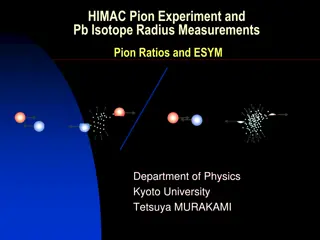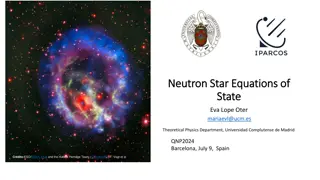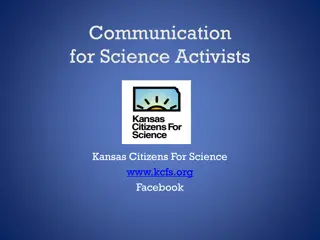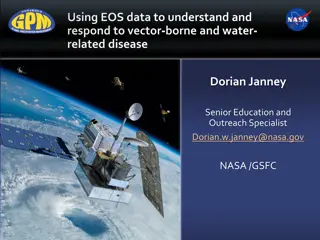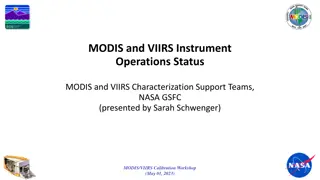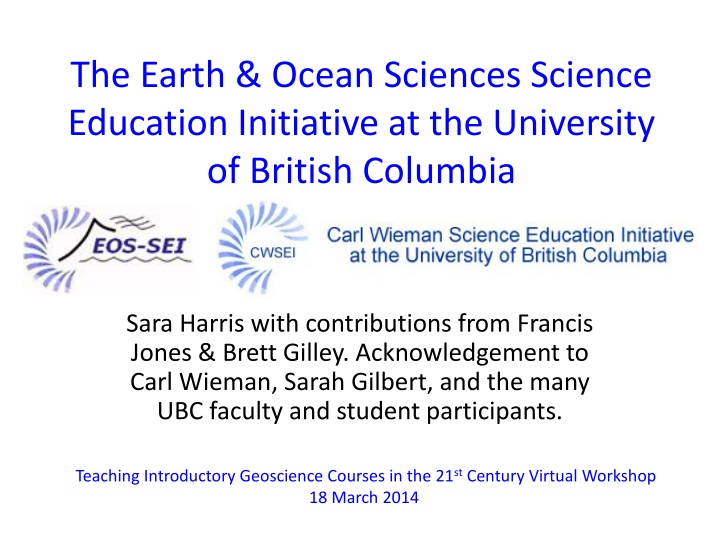
Evidence-Based Pedagogy in Geoscience Education: Improving Teaching & Learning
Explore how the Carl Wieman Science Education Initiative at the University of British Columbia is revolutionizing geoscience education through evidence-based pedagogy. Discover innovative strategies such as articulated learning goals, peer instruction using clickers, and 2-stage exams to enhance student learning outcomes. Learn about the impact of evidence-supported teaching practices on student performance, instructor attitudes, and overall learning experience.
Download Presentation

Please find below an Image/Link to download the presentation.
The content on the website is provided AS IS for your information and personal use only. It may not be sold, licensed, or shared on other websites without obtaining consent from the author. If you encounter any issues during the download, it is possible that the publisher has removed the file from their server.
You are allowed to download the files provided on this website for personal or commercial use, subject to the condition that they are used lawfully. All files are the property of their respective owners.
The content on the website is provided AS IS for your information and personal use only. It may not be sold, licensed, or shared on other websites without obtaining consent from the author.
E N D
Presentation Transcript
The Earth & Ocean Sciences Science Education Initiative at the University of British Columbia Sara Harris with contributions from Francis Jones & Brett Gilley. Acknowledgement to Carl Wieman, Sarah Gilbert, and the many UBC faculty and student participants. Teaching Introductory Geoscience Courses in the 21st Century Virtual Workshop 18 March 2014
Overview: The Carl Wieman Science Education Initiative, 2007-2014 Course Design Principles: Learning Goals aligned with Activities aligned with Assessments Using Evidence to Improve Teaching & Learning
Using Evidence-Based Pedagogy in Introductory Classes Articulated Learning Goals (student-focused) Pre-class preparation with accountability In Class (active learning w/timely feedback): Peer Instruction Clickers In-class Worksheets with Clicker Check-ins Assessment: Pre-Post assessments (as validated as possible) 2-Stage Exams (an example) For CWSEI research papers: http://www.cwsei.ubc.ca/SEI_research/index.html
Categories of Evidence (Evidence of change or improvement or good stuff in teaching and learning) Student work/performance Instructor-reported teaching practices and attitudes Student perceptions 3rd party observations
Pre-Post Assessments for Feedback and Iteration Evidence supporting worksheets + clickers as more effective for student learning than lecture + clickers 6 offerings, 2 different courses, 3 different instructors, nstudents= 76-150
Assessment to Support Learning: 2-Stage Exams Students take the exam individually, then immediately repeat the exam in a group of 4. Instant feedback Students leave exam knowing the answers Measurably greater improvement in subsequent testing of concepts discussed during exam, than for concepts tested individually only Gilley, B. and Clarkston, B., 2014. Collaborative testing: evidence of learning in a controlled in-class study of undergraduate students, Journal of College Science Teaching, Vol. 43, No. 3, 83-91. Video at: http://blogs.ubc.ca/wpvc/two-stage-exams/
Culture Change: Teaching Practices Inventory Effective Teaching Practices Fractional Score Wieman, C. and Gilbert, S., submitted. The Teaching Practices Inventory: A new tool for the evaluation and improvement of college and university teaching in mathematics and science. http://www.cwsei.ubc.ca/resources/TeachingPracticesInventory.htm
Culture Change: Teaching Practices Inventory Not much change in observation Some more reading! More talking to colleagues! http://www.cwsei.ubc.ca/resources/TeachingPracticesInventory.htm
Culture Change: Teaching Practices Inventory 2013: Barriers are about INSTRUCTORS 2007: Barriers were about STUDENTS & INFRASTRUCTURE http://www.cwsei.ubc.ca/resources/TeachingPracticesInventory.htm
Student Learning Experiences Survey 4. Classroom practices -helpfulness d. Clicker questions posed in class extremely i. Demonstrations, animations or simulations shown by the instructor very a. Lecture presentations in class moderately e. Discussions you had with other students about those clicker questions c. Discussions about why material is useful, important or interesting little b. "Socratic dialogues"; i.e. instructors teaching by constantly asking not j. Discussions before, during, and/or after those demonstrations f. In-class activities in groups using worksheets or other resources N/A h. Whole class discussions moderated by the instructor m. Help from the instructor during class g. Questions asked of students in class NOT involving clickers of worksheets k. Opportunities you had to assess or comment on work of your peers l. Help from teaching assistants during class 0% 20% 40% 60% 80% 100% Survey available at: http://eos.ubc.ca/research/cwsei/resources/studentsurvey-v3.pdf
Student Learning Experiences Survey 4. Classroom practices - helpfulness d. Clicker questions posed in class extremely e. Discussions you had with other students about those clicker questions very a. Lecture presentations in class moderately b. "Socratic dialogues"; i.e. instructors teaching by constantly asking c. Discussions about why material is useful, important or interesting little i. Demonstrations, animations or simulations shown by the instructor not j. Discussions before, during, and/or after those demonstrations m. Help from the instructor during class N/A g. Questions asked of students in class NOT involving clickers of worksheets h. Whole class discussions moderated by the instructor f. In-class activities in groups using worksheets or other resources l. Help from teaching assistants during class k. Opportunities you had to assess or comment on work of your peers 0% 20% 40% 60% 80% 100% Survey available at: http://eos.ubc.ca/research/cwsei/resources/studentsurvey-v3.pdf
Classroom Observations (COPUS): Smith, M.K.,F.H.M Jones, S.L. Gilbert and C.E. Wieman, 2013. The Classroom Observation Protocol for Undergraduate STEM (COPUS): A New Instrument to Characterize University STEM Classroom Practices, CBE-Life Sciences Education, Vol. 12, 618-627.
Long-term sustainability & Challenges Importance of involving new faculty Importance of involving graduate students Changing the norm Collaborative co-teaching Encouraging reflection and deliberate practice Importance of administrative support (evaluation, tenure, promotion, hiring decisions)
Resources http://www.cwsei.ubc.ca (lots of resources on evidence-based pedagogy for instructors!) http://eos.ubc.ca/research/cwsei/ (approaches & outcomes from EOS-SEI) http://eos.ubc.ca/research/cwsei/eossei-times.html (our monthly 2-page newsletter) http://blogs.ubc.ca/wpvc/ (short video clips of techniques in action, e.g. 2-stage exam; jigsaw activity; active learning in a large class; tutoring in a large class)


